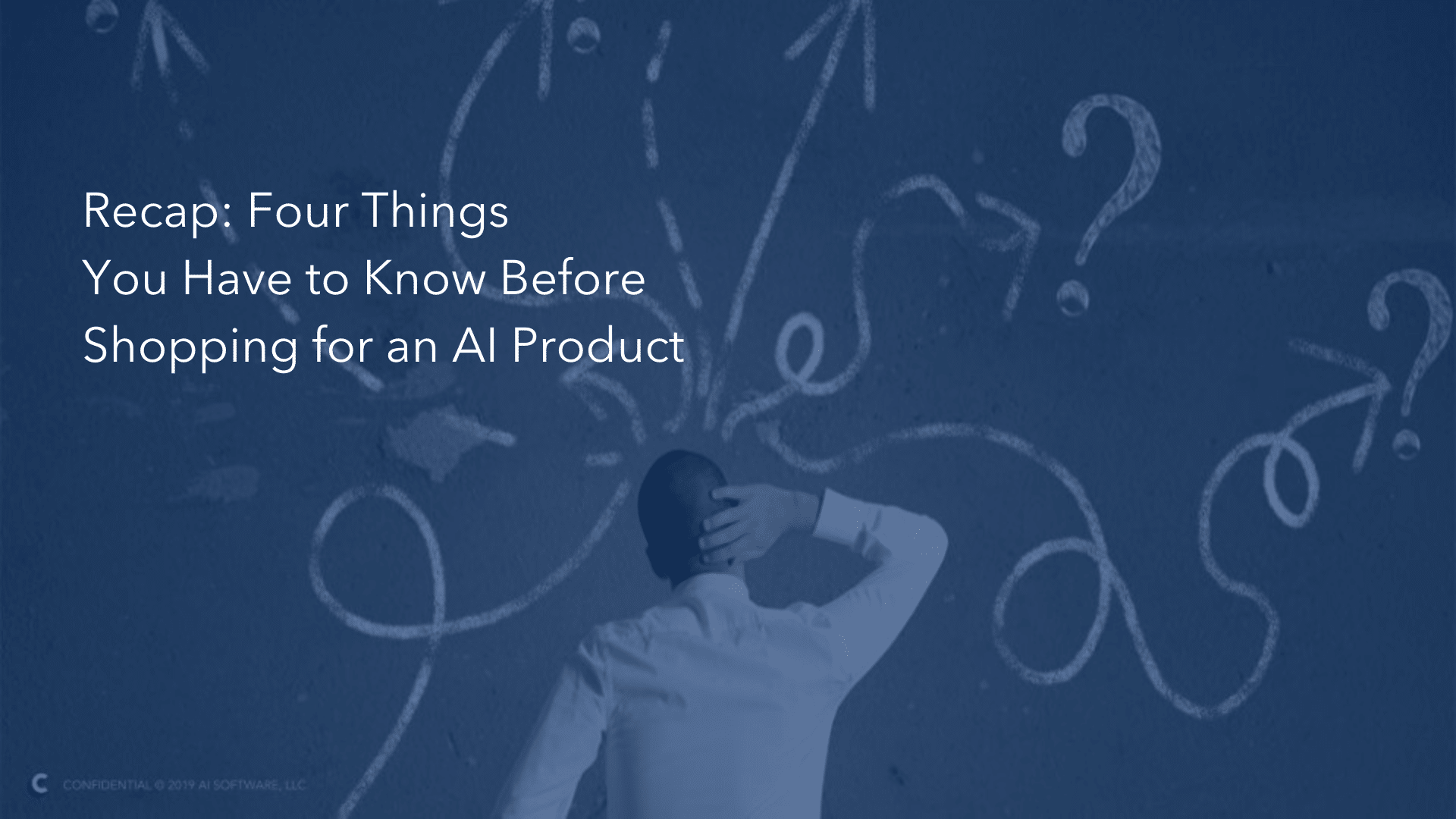Implementing an AI solution is something many businesses talk about, but what’s often left out of the conversation is how to decide what AI product is right for your business. Our VP of Marketing, Justin Schmidt, decided to share his top AI sourcing tips in a recent webinar with HR.com.
One: Bridging the AI-education gap.
As consumers, we look up reviews and do our homework before purchasing an item for personal use. While there are websites like Capterra and G2 around to help make business purchases, it’s important to understand the basic terms surrounding AI to completely grasp everything a tool has to offer.
Artificial intelligence: Software that learns to replicate intelligent human behavior.
Algorithm: A formula or set of rules for performing a task.
NLP: Natural Language Processing is a field of artificial intelligence that enables computers to analyze and understand human language.
Machine learning: Computer programs learning and adapting to new data without human interference.
Deep learning: AI function that imitates the human brain in processing data and creating patterns for use in decision making.
Human-in-the-loop: Human intervention when the AI doesn’t get it right. This intervention then trains the AI for the next time.
Robotic process automation: The use of specialized software “bots” to automate and standardize repeatable business processes.
Reskilling: Updating and improving the skills of your team.
Two: Create a plan for the purchase of the AI solution.
Any AI implementation plan should include a concerted effort to map out and understand the systems of the organization. Getting an understanding of a system is critical to determine the use cases your AI product will serve.
Justin defined a system as a group of connected elements with a shared purpose. Within every system, there are three components…
- Input: the task
- Output: the result of the task
- Feedback Loop: a response to the output that improves the input

Here are a few steps to scoping out your system.
- Identify the order of operations
- Log how many people are involved
- Discover how many tools are involved
- Understand where all the information is required
- Discover how it’s all measured
- Document it all
Once you have everything documented, you’ll know where the challenges live, so you can begin solving the problems.
“Confused users are never happy users.”
Justin Schmidt
VP of Marketing at Capacity
Three: Know the right questions to ask when evaluating each AI provider.
Some software can be really daunting if you don’t receive proper training or ask questions ahead of time. Justin recommended asking questions early and often to help identify the AI product that’s right for you.
For example…
What does deployment look like?
Really make sure you understand the rollout plan. Every AI solution will need some time to train the model, and during this time it’s important that all stakeholders are aware of what a successful training entails.
How is security managed?
Whenever you’re entrusting your organization’s data to a third party, it’s important that you do your due diligence. Any AI product should never cache sensitive data or ack a permissions structure, however, it should identify as GDPR, CCPA, and SOC 2 compliant.
“If you have company data, you have sensitive data.”
Justin Schmidt
VP of Marketing at Capacity
How do I know if your product is really AI?
AI has become a buzzword, so it’s necessary that you challenge your vendor. Check under the hood to see how the tool is carrying out the tasks they promise.
Four: Tips for the implementation process.
Once you’ve become acclimated with the terms, designed a plan based on the systems you want to automate, and asked the important questions, it’s time to get the team on the same page.
Involve all stakeholders.
Make sure the stakeholders are on board and know what to expect during the implementation process. Everyone who is using the tool should be aware of their role for implementation and beyond.
Provide open feedback lanes for the users so that everyone can get acquainted with the product. The AI will need time to absorb the knowledge of your organization, too. Communicate clearly about the type and level of interaction the tool needs to provide value.
Define success up-front.
The goal of the tool should be clear before you make a purchase. Whether you’re looking for a solution to help sort through resumes w/o bias, reduce the inefficiencies of your onboarding system, or train managers on ways to better motivate their people, everyone should know what to expect.
Understand the system.
Understanding the input, output, and feedback loop involved with the goal(s) you’re trying to realize will help ensure success with your new vendor. Identify these three factors in every topic you cover with the Customer Success or Account Manager during QBRs or check-in points.











































